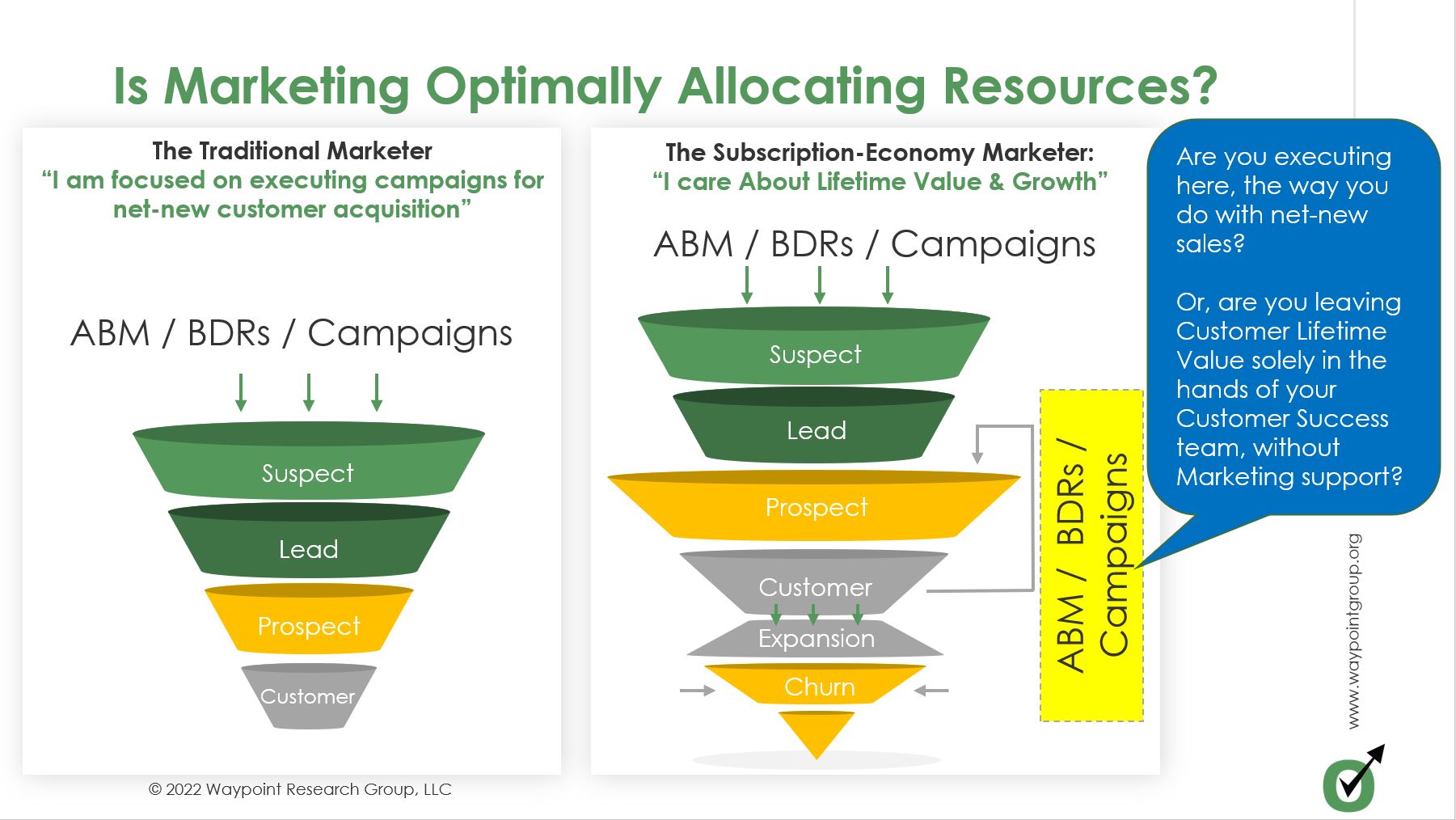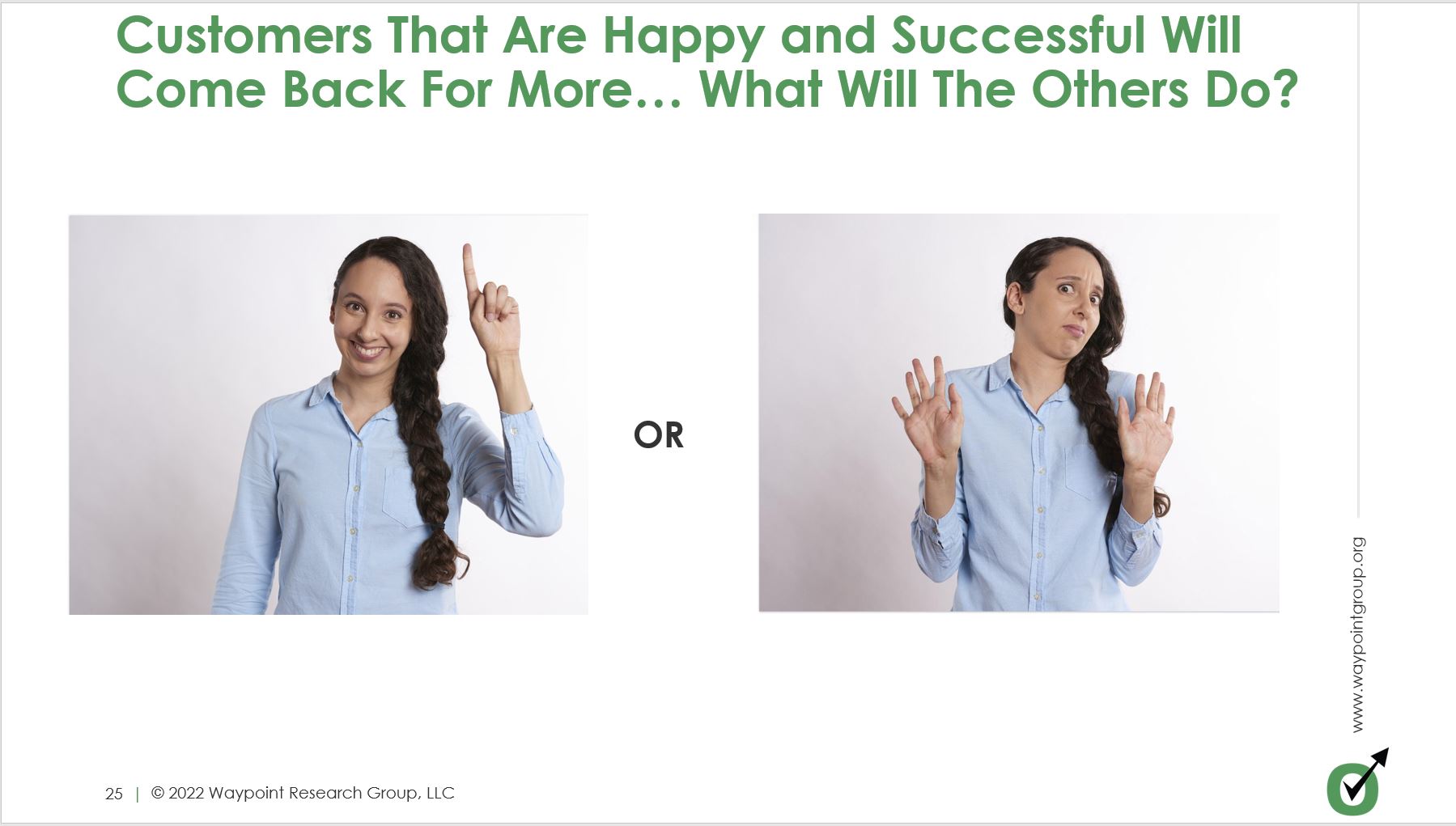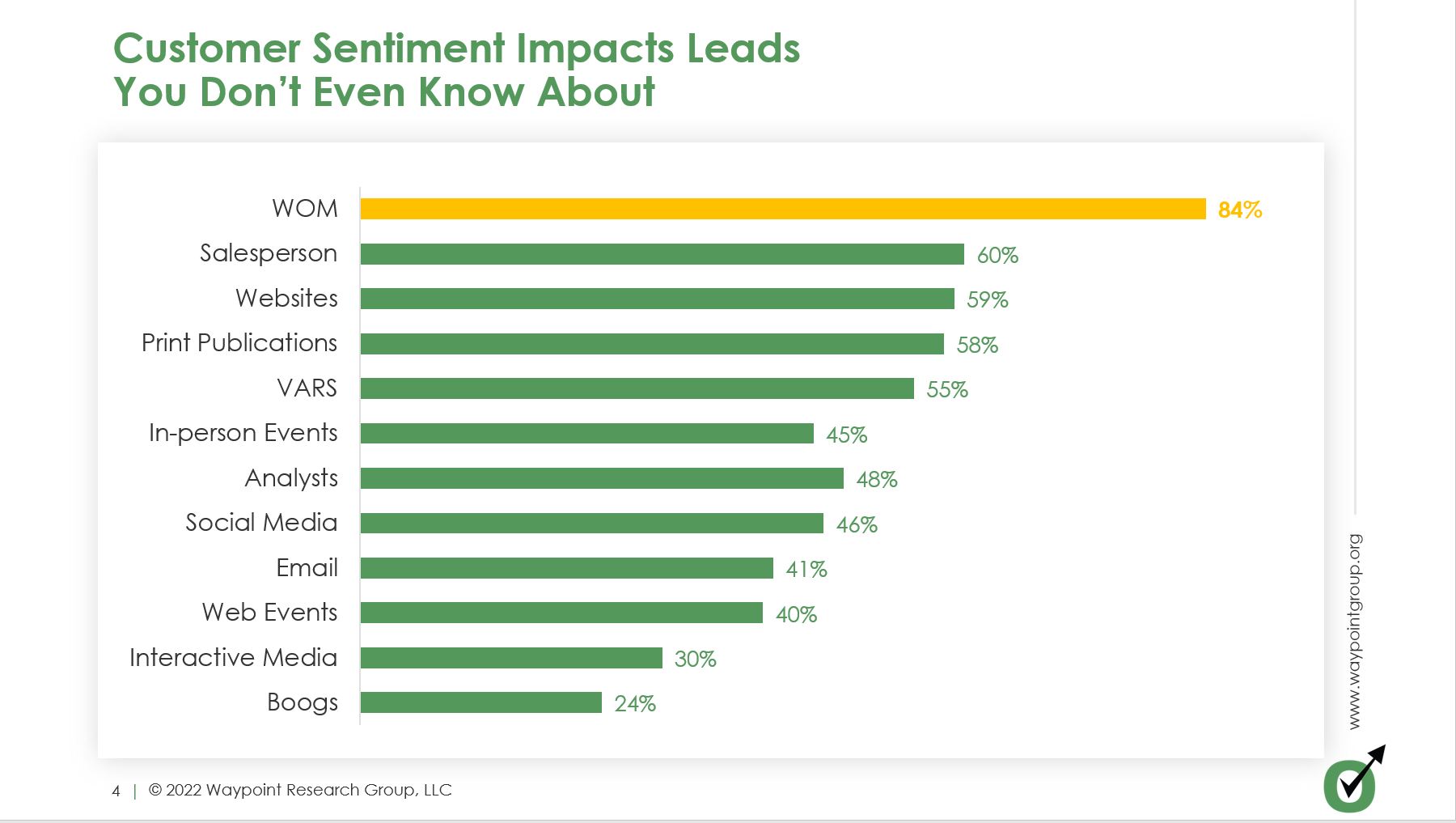Search Waypoint Resources
Part 2 in the Series: Optimize Your Resources For Maximizing Lifetime Value

Catch Up With the New Realities:
Leverage Marketing’s Win/Loss Framework to Accelerate Your Career
Part 2 in the Series: Optimize Your Resources For Maximizing Lifetime Value
Our first in this series about Marketing’s need to rise to the “subscription economy challenge” focused on creating shareholder value through a focus on NRR. Which would you rather show on your resume:
(a) “Executed demand gen campaigns to increase sales-ready leads by 23%” OR
(b) “Grew NRR by 18% year-over-year by building an ongoing Customer Engagement program that increased Customer Lifetime Value (LTV) by 14% through improved retention and expansion rates, and improved close rates by 24%.”
Option B isn’t fiction. And who wants to talk about Lead/Demand Gen programs when you can talk about business results? Let’s dive into what it’s all about, starting with allocation of resources and then some critical aspects of the process. In the next article we’ll discuss specific tactics.
1. Where Are You Focusing?
Customer Success (CS) / Account Teams are speaking with their clients every day. Yet they are focused on tactics/execution, not company strategy or “programs.” Like in Sales, CSMs often carry quotas, have daily customer “fire drills,” and do everything they can to acquire the desired outcomes for their accounts.
The primary mission of a Customer Success organization is to help customers achieve their desired outcomes. The skill set and methods for selling are quite different from CS. We don’t often see Professional Services or Consulting teams with quotas and explicit KPIs to drive sales (Services firms excepted), nor should we expect sales directly from our Customer Success organization without assistance.
 In net-new sales where “lead gen” is generally conducted by campaigns and Business Development Managers (BDMs) to provide those sales-ready leads, Marketing plays a critical role in helping Sales success. Given today’s subscription economy, the same must be true for existing accounts.
In net-new sales where “lead gen” is generally conducted by campaigns and Business Development Managers (BDMs) to provide those sales-ready leads, Marketing plays a critical role in helping Sales success. Given today’s subscription economy, the same must be true for existing accounts.
Marketing must be more strategic in leveraging this critical aspect of growth by engaging current customers appropriately to answer these questions:
- Which accounts are “ripe” for expansion?
- Which accounts are likely to churn?
- And critically, how well is our Ideal Customer Profile performing the market – do we have the right positioning, messaging, and execution?
2. Stakeholder Sentiment Is A Guiding Light in An Account
I suspect we all know the dangers of trying to sell more to an angry / unhappy customer.
So with resources focused on “farming” existing accounts, the most critical aspect of a Customer Marketing function here must be to KNOW: Is the customer happy, overall? Do the people in the account perceive value and success? There are enormous benefits to obtaining the truth from every stakeholder in every account with some regularity:
- Accelerated growth in NRR: If we know what accounts are unhappy and likely to churn, then we can execute the right proactive plays to drive retention well in advance of the customer’s communication of a cancellation (where it’s always too late).
 Similarly, if we know which accounts are willing to consider expansion, whether through add-ons, more seats, new services, etc then we know the Account Managers / CSMs would be highly interested in engaging the customer around this play.
Similarly, if we know which accounts are willing to consider expansion, whether through add-ons, more seats, new services, etc then we know the Account Managers / CSMs would be highly interested in engaging the customer around this play.
- Don’t you agree that customers that are happy and successful might be interested in expanding? And what about the dark side… We all know that trying to sell more to an unhappy customer is risky at best. Don’t encourage unsubscribing, disengagement, and churn by demonstrating that you are deaf to their concerns.
- Profitability through Prevention: We know that happy customers are less costly (and easier) to serve. We also know that customer issues that happen repeatedly waste time and money. Wouldn’t it be great to know where customers are having issues, and where they are finding clear, value-add differentiators? If you knew that your company could create promoter-advocates from the start, rather than having to course-correct along the way, wouldn’t that be something worthy of consideration?

- Advocate Army: Nearly every Marketer I speak with tells me that the best leads come from customer referrals. What percentage of your customers are referring others, reducing your Cost of Acquisition while also accelerating the sales cycle? Consider the Gartner/Challenger Sales statistic that indicates there’s an average of 6.8 contacts involved in every sale, then add the number of end-users in a given account, and you can see how creating an Advocate Army drives a mountain of dividends. If you have 100 accounts that means there are at least 600 possible advocates… how many have you identified and activated?
This chart above from Forrester Research highlights the opportunity: Most companies start off their search for vendors by speaking with each other, not by coming to you. More advocates means higher possibility of being short-listed by an incoming prospect.
===============================
[Case Example Sidebar: Does your “Customer Marketing” consist of newsletter and email blasts to all your customer contacts? We’ve all learned that untargeted content is a recipe for disengagement, so why do we still do that for existing customers? Humanity, Inc. learned this the easy way. After running their listening program for a few months they heard loud-and-clear that customers were wildly UNhappy with the newly developed reporting module. Improving the feature and targeting those contacts that expressed the reporting concerns resulted in
- 46 accounts that reversed a decision to cancel and instead stayed on
- 687 new promoters identified to be activated
- 20 new case stories, not to mention over 80 hours of make-work eliminated by easier identification of candidates.
===============================
Identifying, activating, and empowering your advocates is just the beginning. The same motions that you use to identify and activate your advocates must be leveraged for course-correcting unhappy customers. After all, your company wouldn’t want to inadvertently be creating a “detractor army” that brings strong headwinds. More on that in the next article, where we’ll discuss how active listening can power your career.